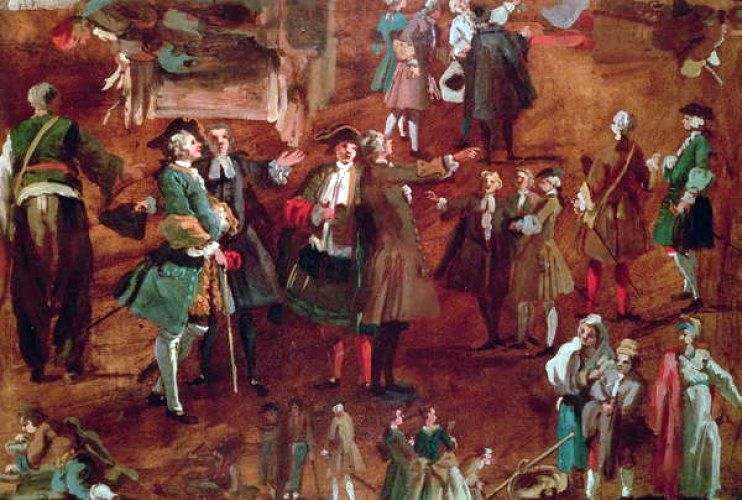
Urban views in the XVIII century was taken to revive by human figures. Canaletto remained true to this tradition. If you look closely, you can see that the figures depicted in his pictures are not specific personalities, but types – the gondolier “in general”, the grandee “in general,” the priest “in general,” the housewife “in general,” etc.
That is, each character is not characterized by individual traits, but by a suit or an invariable set of gestures – as, for example, on the sketch “Figures.” Even on large-sized canvases, figures taking part in the action remain anonymous and generalized. They do not live their own lives, but only “populate” the artistic space, representing social signs-labels.
In this case, Canaletto’s desire to show the social life of Venice in all its diversity is beyond doubt. This is confirmed by his “English” paintings, differing – as far as human figures are concerned – with even greater schematism.
 Étude “Figures” – Antonio Canaletto
Étude “Figures” – Antonio Canaletto View of the Doge’s Palace in Venice by Antonio Canaletto
View of the Doge’s Palace in Venice by Antonio Canaletto Etude “Figuras” – Antonio Canaletto
Etude “Figuras” – Antonio Canaletto Church of St. John and Paul and the school of San Marco by Antonio Canaletto
Church of St. John and Paul and the school of San Marco by Antonio Canaletto Bucentaurus prepares to sail from the mole on the day of the Ascension by Antonio Canaletto
Bucentaurus prepares to sail from the mole on the day of the Ascension by Antonio Canaletto Colosseum by Antonio Canaletto
Colosseum by Antonio Canaletto Capriccio with Colonnade by Antonio Canaletto
Capriccio with Colonnade by Antonio Canaletto Westminster Bridge in London with a motorcade of the Lord Mayor on the Thames by Antonio Canaletto
Westminster Bridge in London with a motorcade of the Lord Mayor on the Thames by Antonio Canaletto